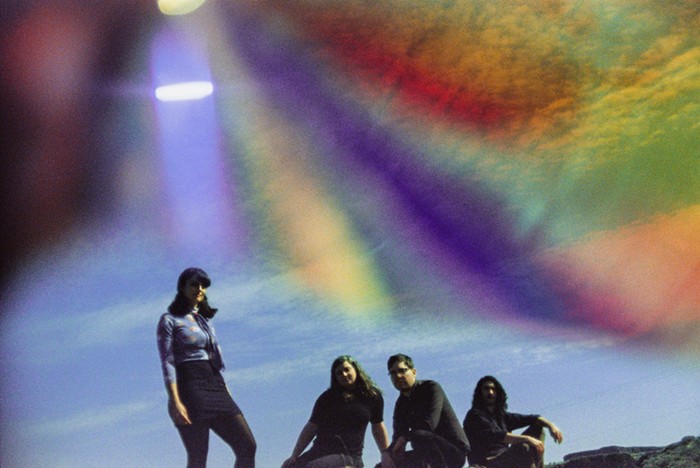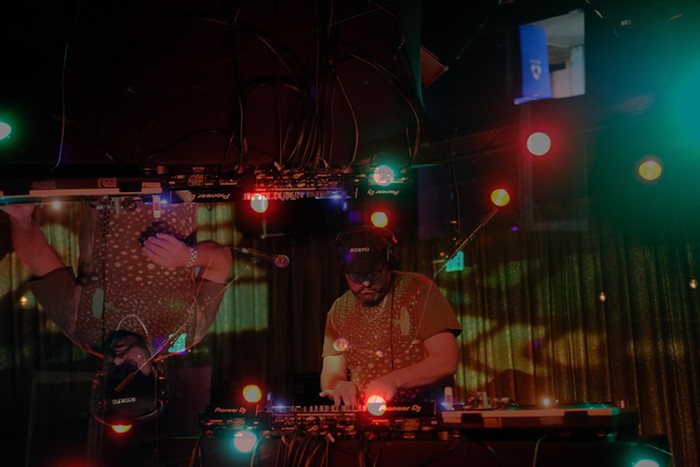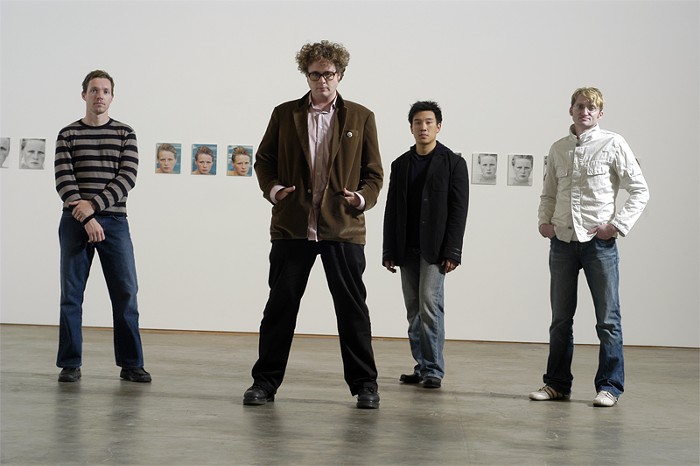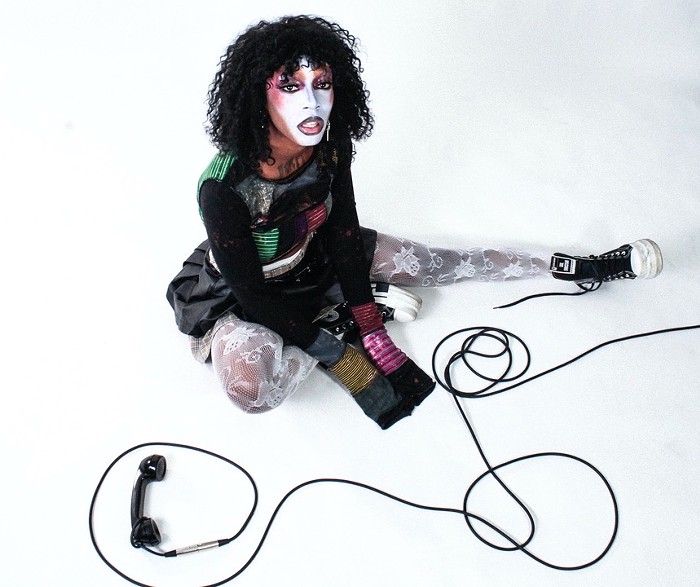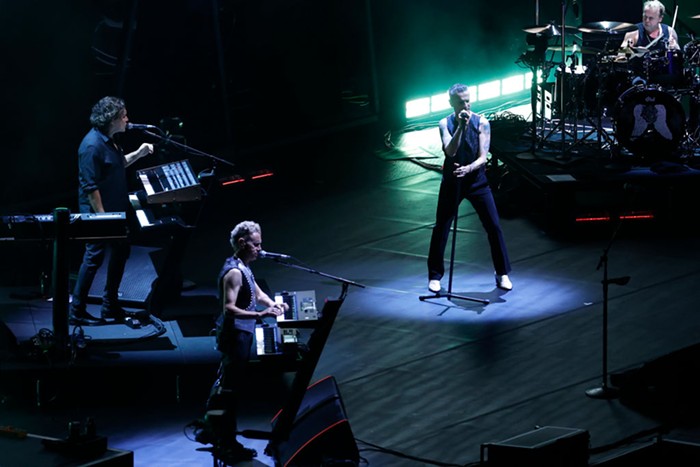As random as a junkyard, yet as carefully considered as any Max Ernst collage, the variegated threads that course through every song in the oeuvre of Chicago's Califone often leave people at a loss to describe them. Their output—from 2001's full-length debut, Roomsound, to Deceleration (their ongoing series of improvised soundtracks to friends' films) to their latest, Roots & Crowns—evades easy descriptors and makes close inspection ultimately frustrating. "I don't think it should be necessarily dissected; I think it should be taken for what it is," singer and guitarist Tim Rutili tells this music writer. "You can say it sounds like this or sounds like that, [but] it's going to sound completely different to somebody else."
Califone itself was born out of Rutili's previous band, the Sub Pop–affiliated Red Red Meat. "When Red Red Meat started out, we would get into the practice space and practice and play shows before we would record anything; we approached it as a rock 'n' roll band: guitars, bass, and drums. With Califone, from the beginning it was approached as a home recording project." And although Red Red Meat eventually disintegrated, the same constituents composed the earliest Califone sessions: Brian Deck, Ben Massarella, Tim Hurley, and Rutili. The main difference between the two projects was the use of the studio as instrument, as Califone draw from the conceits of Brian Eno and Miles Davis's collaborations with Teo Macero, experimenting to tape. Ex-Meat drummer Deck handles many of the recording duties along with Michael Krassner, both of whose contributions to the band cannot be overstated; what happens behind the boards is integral to Califone's sound.
Not that it wasn't difficult for Califone to learn to perceive that Pro Tools and computers could be a rock band's best friend. "At first, it was overwhelming and I just hated the idea of it," Rutili admits. "I didn't know what I wanted to do. Most people abuse [the technology] and make shit out of it. It [presented] just too many possibilities and it was crippling. We still work on tape quite a bit, but [Pro Tools] is part of our aesthetic now. It leaves us open to use just whatever we have, what we can put in our hands and see if it works."
Such technology both sharpens and obfuscates the band's sound palette: acoustic instruments such as banjo, accordion, kalimba, mandolin, and violin melt into something far from their original timbre, sounding at once down-home and completely alien. Listening to Roots & Crowns, one set of ears can hear the old-timey sounds of Anthology of American Folk Music on a song like "Alice Crawley" or "The Eye You Lost in the Crusades" while another can hear the woozy loops and digital processing that both underpin and undercut songs like "Rose Petal Ear."
Whereas 2004's Heron King Blues was a languid, spontaneous, at times shadowy affair, with songs unfurling beyond the seven-minute mark (the title track is double that length), Roots & Crowns is a far more concise, song-based affair. As the canvas has shrunk, Califone's obsessive attention to detail and layering has emboldened and intensified. Horns and strings add new possibilities. Texture and juxtaposition of conflicting sonic elements give a song like "A Chinese Actor" its polish and grime. Encrusted with a blast of shortwave radio (à la John Cage's Imaginary Landscapes), Califone stack up patters of hand drums, dirge-like Delta blues slide guitar, more radio static, and erratic canned handclaps; the dense concoction somehow clarifies Rutili's sphinx-like lines about catacomb wine, dim headlights, and the curious image of saints and angels swapping wives. "Black Metal Valentine" arises out of field recordings and distorted arcade bloops with a soulful guitar shimmer. It leads to a climax centered upon the image of "ice on dancers' broken feet."
So what does such a wreck of sound and words suggest? Such a query erroneously implies conscious intent. "I'm hoping people just make their own decisions about it," Rutili opines. "I just try to write and not think about it; I just want it to be visual. Most of those words are pictures to me. They're pictures that hopefully will mean different things to different people who are listening." He chuckles, though, as he adds what such open interpretation also means: "Some people might just hear some guy that sounds drunk, mumbling. I get that, too."
